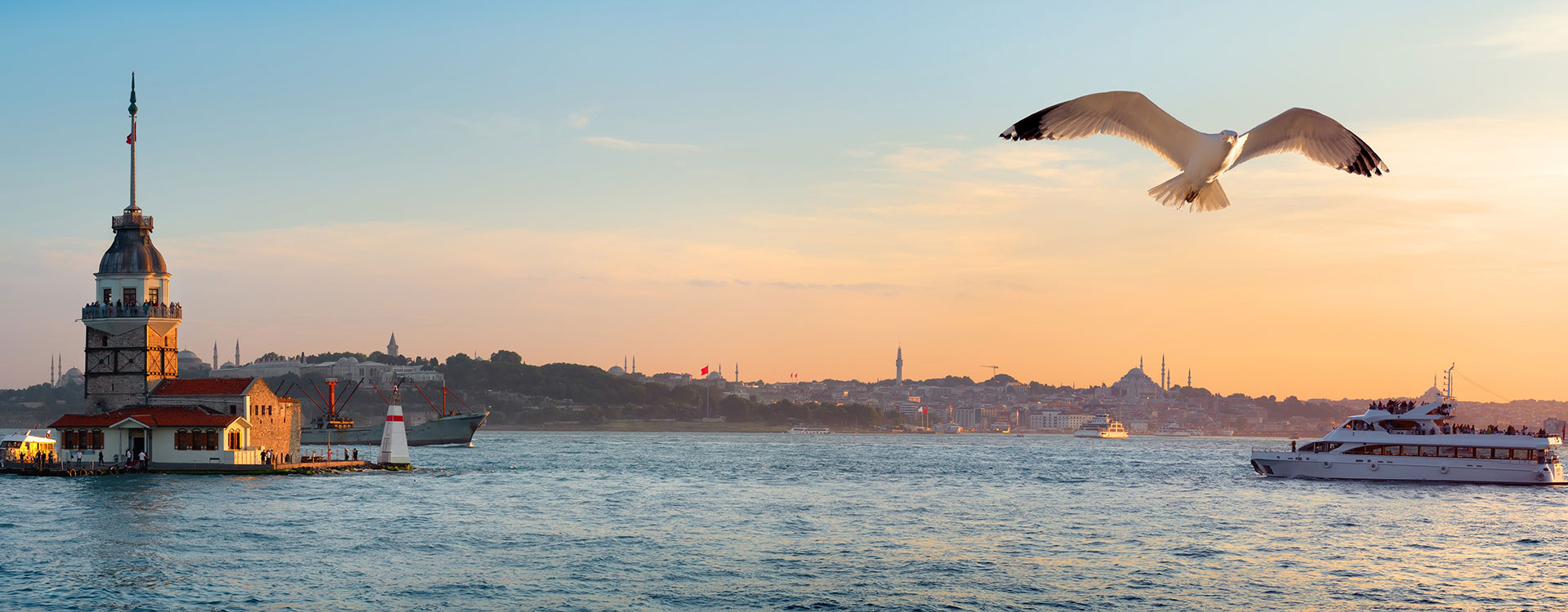
Istanbul is a world capital, the only city in the world that combines two continents and geography that hosts the world's largest empires. From this world, every culture has left a mark on this colorful city that hosts thousands of different people and cultures. There are many sights, museums, and places to see in this vast metropolis, which is above the eyes of everyone.
Have you ever been in Istanbul? If you answer like “No” it means you missed really important things for your travel because it is the only city in the world that combines two continents and geography that hosts the world's largest empires. It is possible to find various marks of past civilizations. Also, there are not only historical signs and buildings, but also İstanbul still has many different people, lives, and cultures today. So, if you have not added İstanbul to your travel route yet, still not late! Come and feel the diversity.
Sultanahmet, Hagia Sophia, Topkapı Palace Blue Mosque, Grand Bazaar, Maiden’s Tower, Basilica Cistern, and Galata Tower comes first as the most popular historical regions and tourist areas in Istanbul.
If you want to sip your drinks and eat your meals in the heart of Sultanahmet Square, right between Hagia Sophia and the Blue Mosque, with a magnificent view of the Bosphorus, Seven Hills Restaurant is the place you are looking for.
Perched atop one of the seven hills of Istanbul, the Seven Hills Restaurant offers a truly unparalleled dining experience. Situated in the heart of the Sultanahmet district, this renowned establishment provides guests with a magnificent view of the Bosphorus, the Hagia Sophia, and the iconic Blue Mosque.
As you step into the restaurant, you'll be captivated by the stunning panoramic vistas that unfold before you. The floor-to-ceiling windows offer an unobstructed glimpse of Istanbul's most renowned landmarks, creating an ambiance that is both breathtaking and enchanting.
Whether you're savoring a delectable Turkish cuisine or simply enjoying a refreshing beverage, the Seven Hills Restaurant promises to leave a lasting impression. Its strategic location, coupled with its impeccable service and exceptional culinary offerings, make it a must-visit destination for anyone seeking to immerse themselves in the rich cultural tapestry of Istanbul.
Istanbul, cradle of Byzantine and Ottoman Empire, Istanbul, which has traces of the history that millions of tourists visit every year, is the only city in the world that bridges between Asia and Europe.
The most popular tourist areas such as Hagia Sophia, Topkapi Palace, Basilica Cistern, Blue Mosque, Grand Bazaar, Galata Tower, Maiden's Tower and many more, you can witnessed the traces of the historical buildings.
The Bosphorus, which is considered to be one of the natural boundaries between Europe and Asia, is also an international waterway. The shores of the Bosphorus have been home to many civilizations throughout history.
The Bosphorus, which offers a different beauty each season, is transformed into a royal boulevard with mimosa that open in late April and mid-May and become a must-see.
The Bosphorus Strait, which connects Marmara and the Black Sea, is 32 kilometers in length only when calculated straight. The strait, which extends from the Rumeli coast to the shores of the Golden Horn and from the Anadoluhisarı to Rumelihisarı, reaches the deepest point between Bebek and Kandilli. It is the first bridge built on the Bosphorus Strait that joins Asia and Europe.
The Bosphorus has a great geopolitical and economic importance in all times of history because of the fact that it is the only road connecting the Black Sea to the high seas. The Bosphorus Strait is the only alternative gateway to the Black Sea coastline, leading to the Marmara, Aegean, Mediterranean and finally oceans.
The Istanbul Bosphorus, which is very important for touristic purposes, is a natural wonder where the most popular historical sites of Istanbul can be seen, and where millions of tourists visit each year. Galata Tower, Topkapi Palace, Dolmabahce Palace, Ciragan Palace, Bosphorus Bridge, Savarona Yacht, Rumeli Fortress, Fatih Sultan Mehmet Bridge, Anatolian Fortress, Kuleli Military High School, Beylerbeyi Palace, Maiden's Tower are waiting for you with their nostalgic architectures on Bosphorus. You will have a chance to see the buildings along the Bosphorus Strait.
We recommend that every tourist who visiting should join an Istanbul Bosphorus tour. If you leave Istanbul without seeing the Bosphorus during your tour, you will lose a lot of things to be seen. You will not regret!
Here are the most popular places to see in Istanbul's Bosphorus Strait. You should try this list before leaving Istanbul!
1. Golden Horn: If you start the Golden Horn, you can watch the scenery of Istanbul from the air and go up to the top of Pierre Loti (Lovers Hill) by cable car and have a tea in the Pierre Loti cafe with a view of the Golden Horn. After seeing the view and drink the coffee of the Pierre Loti you will want to come again!
2. Galata Tower: One of the historical places that will be indispensable in your route is Galata Tower. You can see the romantic, İstanbul view on the top of the tower. You can take wonderful pictures from the top of the tower which has 63 meters high, also photos taken in front of the tower have a different aura. If you hungry, don’t worry. You can enjoy your tea or meal in the restaurant inside of Galata Tower.
3. Maiden’s Tower: A small island in the middle of the sea, the Maiden's Tower is a magnificent building that has been the subject of many legends in history. In the restaurant and the café, you can dine with a magnificent view and take great pictures. If you think travel to İstanbul, do not forget to add this legendary beauty to your visit list!
4. Dolmabahçe Palace: Dolmabahce Palace is the house of the Sultans and their families in the last years of the Ottoman Empire. Not only Ottoman Sultans but also the great leader Atatürk spend last years of his life in this splendid palace. The inside of Dolmabahçe Palace furnished with spectacular chandeliers and stuff. The garden is a separate paradise with a tranquil atmosphere. Also, you can enjoy morning breakfast and tea in the café in the palace with a peaceful view of Bosphorus.
5. Ortaköy: Ortaköy is one of the favorite districts of İstanbul locals with its beautiful and colorful bazaar and lively atmosphere located in the triangle of the magnificent mosque, mosque, church, and synagogue. If you want to see the splendid bridge view from closely you should visit Ortaköy because the location is under the European foot of the Bosphorus Bridge. Ortaköy is also one of the most popular meeting points of Istanbul residents with its popular nightclubs, bars, beautiful cafes and restaurants, and the pier square and kumpir shops.
6. Rumeli Fortress: Rumeli Fortress is one of the most tourist attractions of Bosphorus with its historical structure, climate, and unique Bosphorus views. The historical Rumeli Castle district has always been one of the favorite tourist areas with its restaurants, parks, and gardens against the sea. If you're planning to visit there and if you like to eat fish; here are two amazing alternatives for you: big fish restaurants or boats that selling fish from bread. After visiting the Bosphorus line, you can go uphill to reach the Hisarüstü where you can take wonderful pictures and feel the peace!
Rumeli Fortress is the perfect place to take pictures with the Bosphorus view.
7. Beylerbeyi Palace: Beylerbeyi Palace was used as a summer palace during the Ottoman period and was also held to host foreign statesmen. You can feel yourself like sultans when you sip your coffee or have breakfast in the café of the palace.
8. Bosphorus Cruise Tour: The most important Istanbul activity is the Istanbul Bosphorus tour which is starting from the Golden Horn to the Black Sea. This is a tour where you can watch magnificent historical palaces, castles, and houses along the Bosphorus in the cool waters of the Bosphorus. It is also possible to eat and drink during the tour. Do not leave Istanbul without joining a Bosphorus cruise!
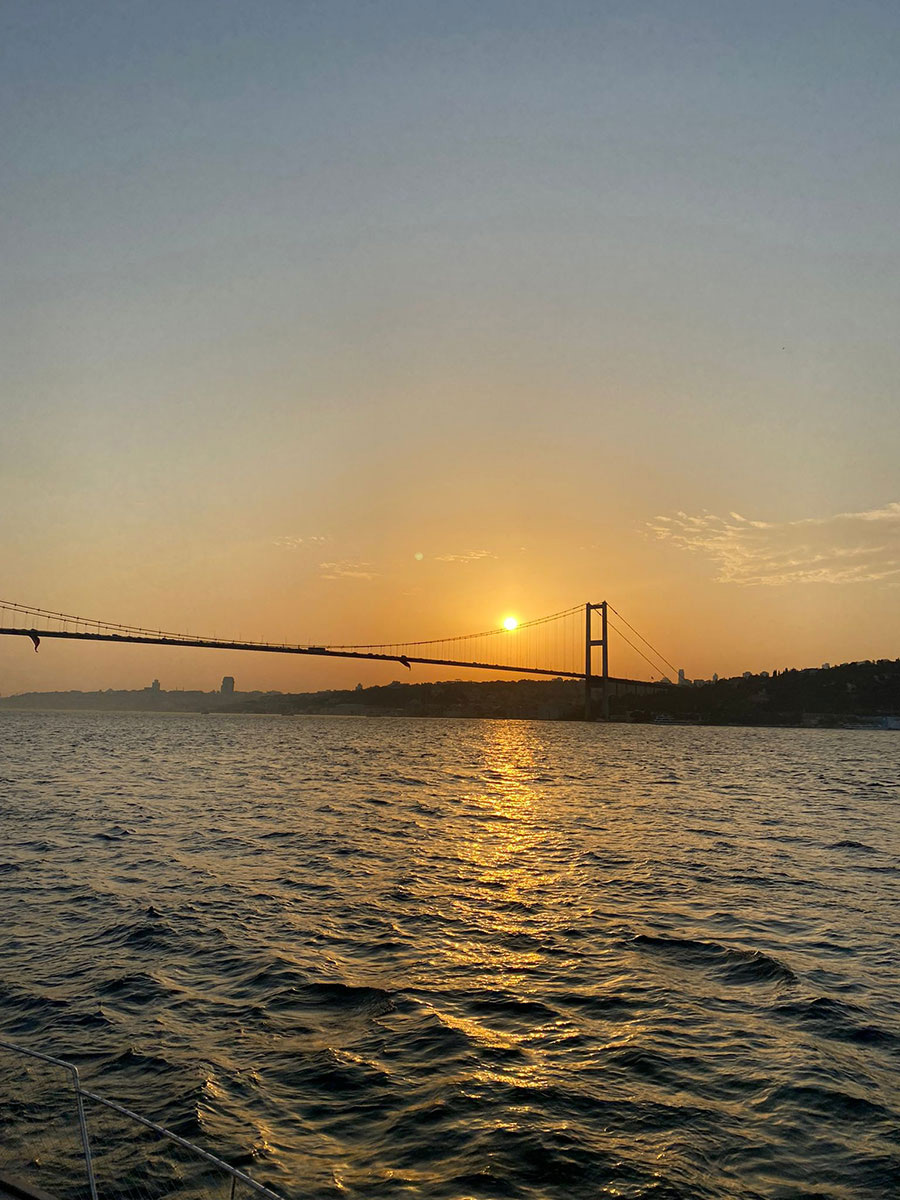
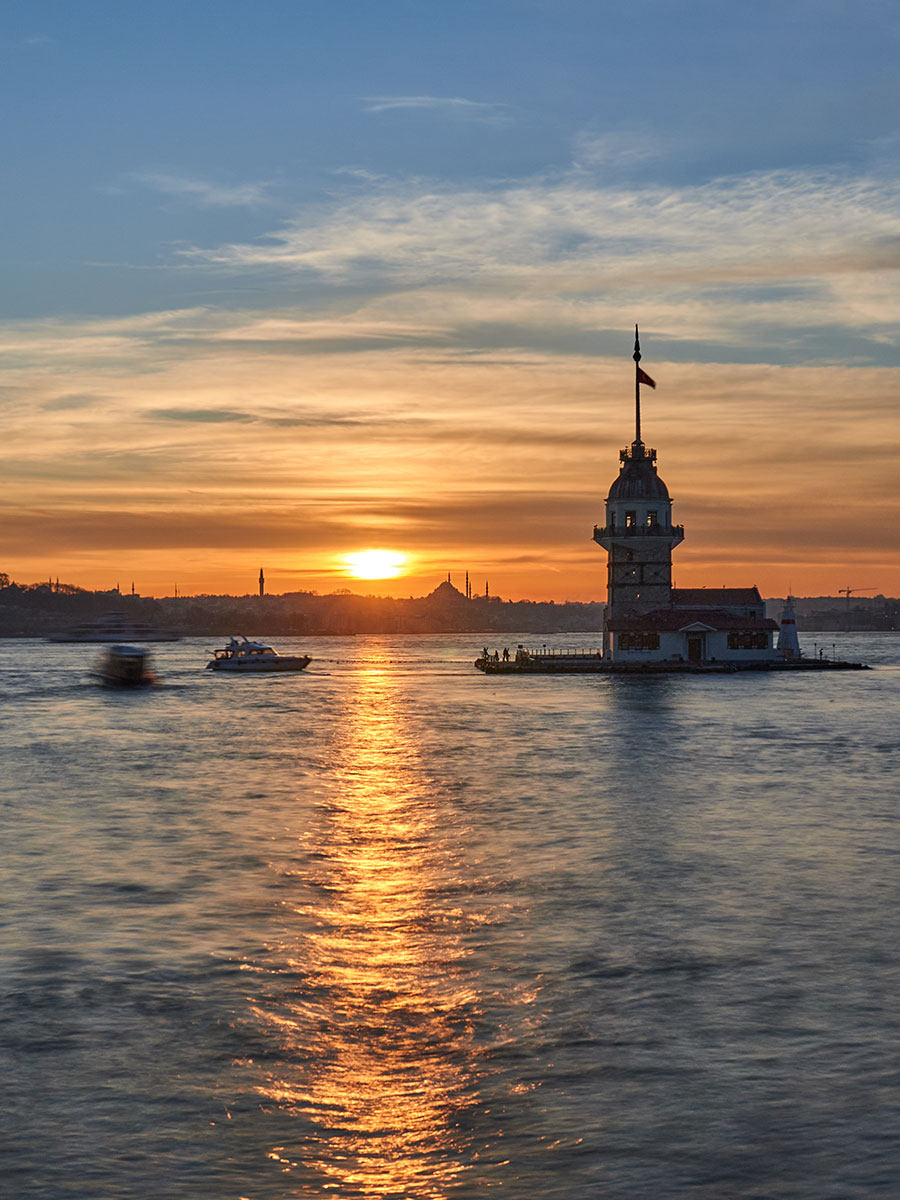
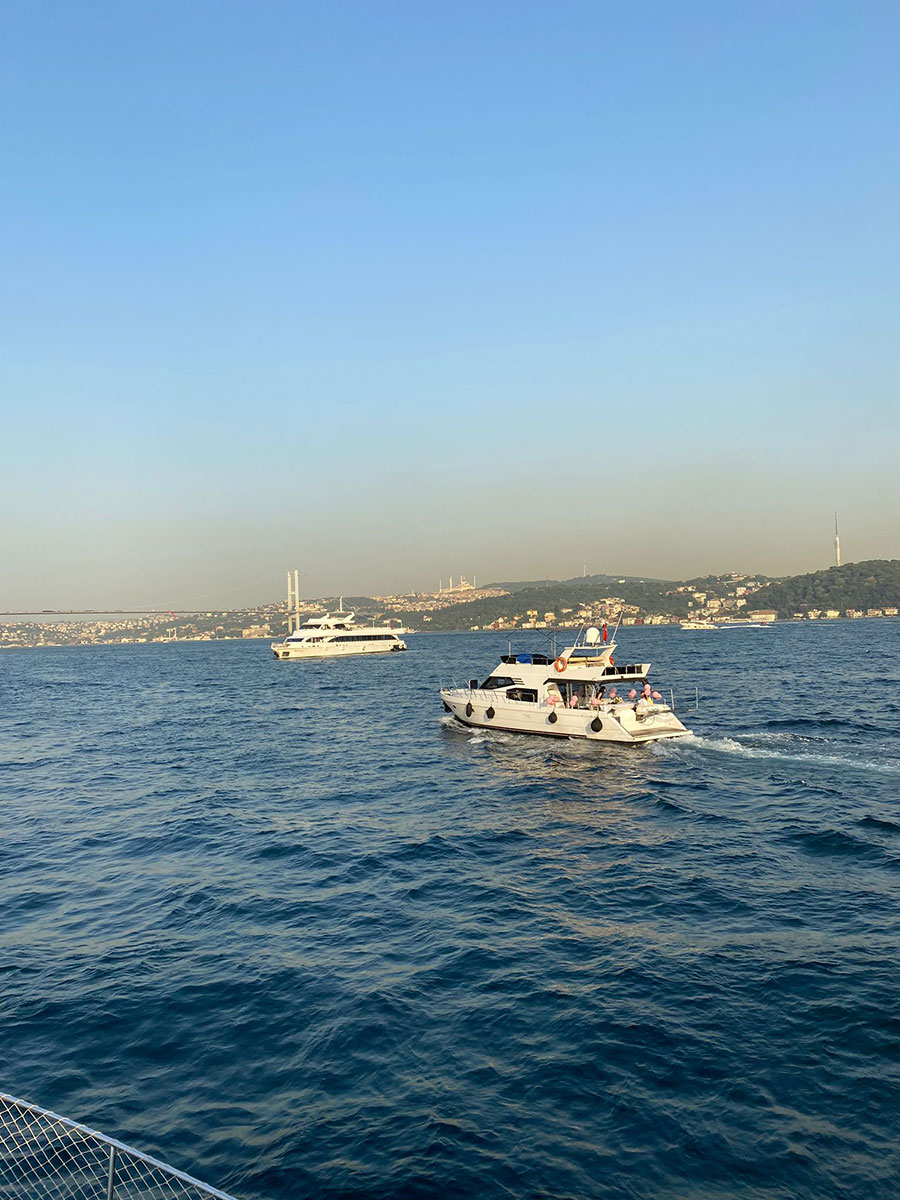
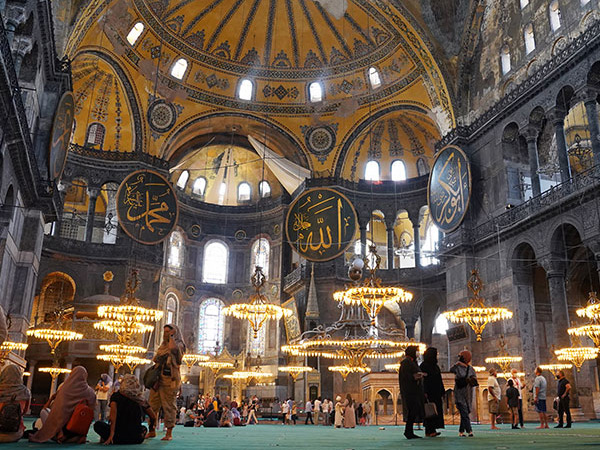
Hagia Sophia in Istanbul, which is based to the Byzantine Constantin days. After the conquest of Istanbul, the place where the first Friday prayer was performed was Ayasofya. It was converted into a mosque but is now visited as a museum.
When Fatih Sultan Mehmed conquered Istanbul, he was lucky to be one of the favorite of the whole world with his splendor of Hagia Sophia which he deemed worthy to make the first Friday prayer.
Completed in 537 and commissioned by the Emperor Justinian, Ayasofya was used as a church in Byzantine for 916 years.
Structure within Hz. Figures such as Jesus, Virgin Mary, Constantine, Great Angels and Gabriel are decorated with gold, silver and marble mosaics.
After the conquest of Constantinople by Fatih Sultan Mehmed was converted into a mosque and the first minaret was added during the period of Fatih. Later, there were minarets added during the 2nd Bayezid period.
During the Ottoman period, the minbar, mihrab and sermon chairs were added to the Hagia Sophia and became a mosque.
Today, there are many pahitaht members and sultan's tombs in the garden of the Hagia Sophia Museum which serves as a museum. With its doors, gravestones and structures added during the Ottoman period, Hagia Sophia still preserves its former glory.
One of the top landmark in Istanbul, you should see is the Hagia Sophia Museum.
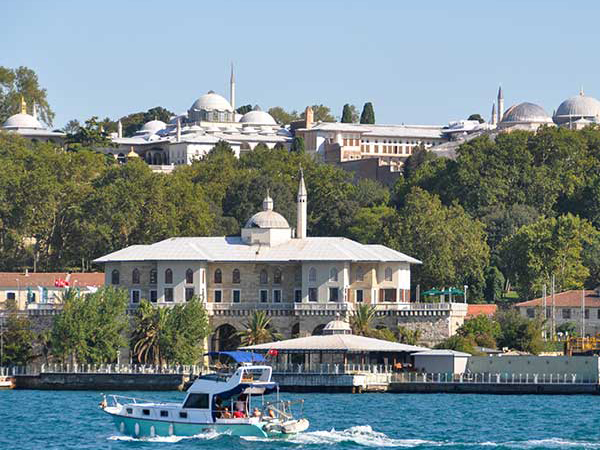
The Ottoman Empire is one of the empires of the world that has reached the largest borders and has maintained its dominance for centuries. Topkapi Palace, where sultans and their families live, is waiting to be seen in the Historic Peninsula with all its glory.
The construction of the Topkapı Palace, built on an area of 700,000 square meters on the eastern Roman Acropolis in Istanbul Sarayburnu, began in 1460 upon the order of Fatih after the conquest of Istanbul. The palace, which was completed in 1478, was used as the administration, education and art center of the Ottoman Empire for nearly 4 centuries.
The glorious structure, which has been entered through the Sultanate Gate in the direction of Hagia Sophia, consists of 4 intertwined houses. Nowadays, there are large gardens and squares around the palace covering an area of 300,000 square meters. Within the gardens surrounding the palace, many buildings were built in time, including the Tiled Pavilion, the Basketmakers' Pavilion and the Gospel Mansion.
The museum's 300,000-piece collection includes porcelain, utensils, silverware, portraits of sultans, private items, and culturally unique artifacts from all over the world.
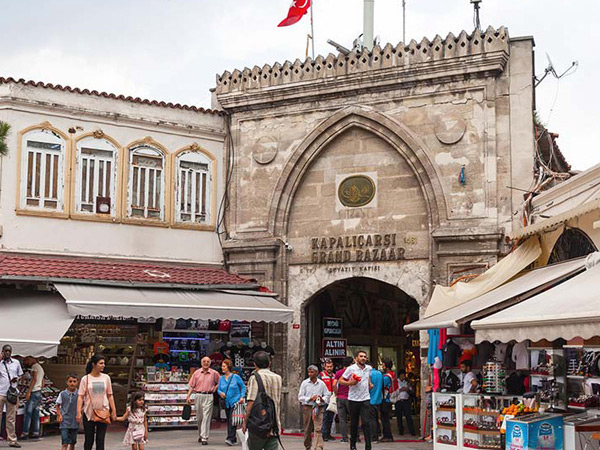
It is one of the oldest shopping center in the world.
One of the most popular stops of the Historic Peninsula is the Covered Bazaar which has been standing in Beyazit for 550 years. The Grand Bazaar, known s the Covered Bazaar by the turists, is famous for the streets where you will disappear and the goldsmiths which steer the world gold market.
In addition to shopping in the oldest bazaar in Istanbul, you will see that everything sold here reflects the ancient spirit of Istanbul.
Carpet, jewelry, works of famous Turkish businessmen silver, copper, bronze souvenirs and decorative items, pottery, onyx and leather, superior quality, form a rich collection of memories of Turkey. Western writers have given a wide space to the Grand Bazaar in their travel records and memoirs. The Grand Bazaar is one of the most important historical buildings decorating Istanbul.
Jewelry, traditional Turkish motifs rugs, antiques, embroidered fabrics in Istanbul, gift cups, backgammon, chess sets, such as gift options to your loved ones can get the stylish design of this authentic space.

Basilica Cistern, which is a popular destination for local and foreign tourists and visited by millions of people during the year, continues to fascinate its visitors with its close history of 1500 years.
The cistern, built to meet the water needs of the palace in the Byzantine period, still impresses with its eye-catching columns and the Medusa statue.
To day concerts held in the Basilica Cistern, which also hosts many art events today, open the doors of a magical world to the participants.
The cistern, built in 532, is the largest covered cistern in the city of Istanbul. The use of old pillars, especially in the construction, is still helping to maintain its ostentatious appearance. The special mortar plaster used for waterproofing is one of the most important features of the cistern. The cistern, where 7000 thousand slaves were operated during construction, was completed in 38 years. The tears on the pillars indicate a slave who died during the construction of the cistern. The fish, which is located in the cistern which is still enchanting its visitors with its perfect atmosphere and special historical texture, nowadays fish.
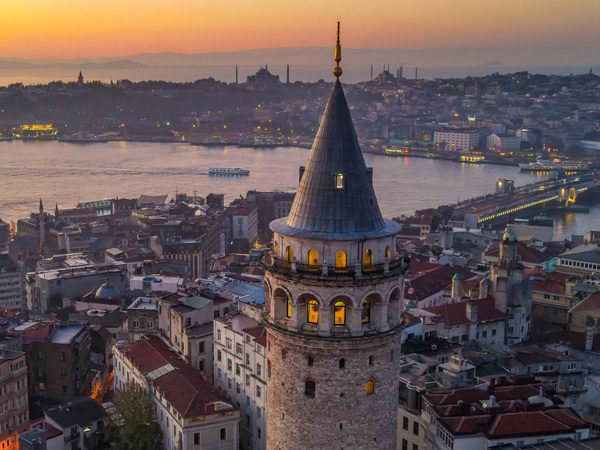
Built in 528, the building was built as a lighthouse, which dominated the Bosphorus and the Golden Horn, but was also used as a term dungeon.
According to a legend; If the Romans, for the first time together, come to the Galata Tower, a man and a woman marry each other. But if one of the couples went to the Galata Tower before, it is believed that this amulet would be broken.
It has a height of 69,90 meters. The walls have a thickness of 3.75 meters and the inner diameter of the tower is 8,95 and the outer diameter is 16,45 meters. The body is constructed using untreated rubble and the weight of the building is estimated to be about 10 thousand tons.
The Galata Tower was originally built by the Byzantine Emperor Anastasius Oilosuz. When it was completed in 528, the wooden structure was used as a lighthouse tower. However, the fire disaster in the region has made the structure completely unusable.
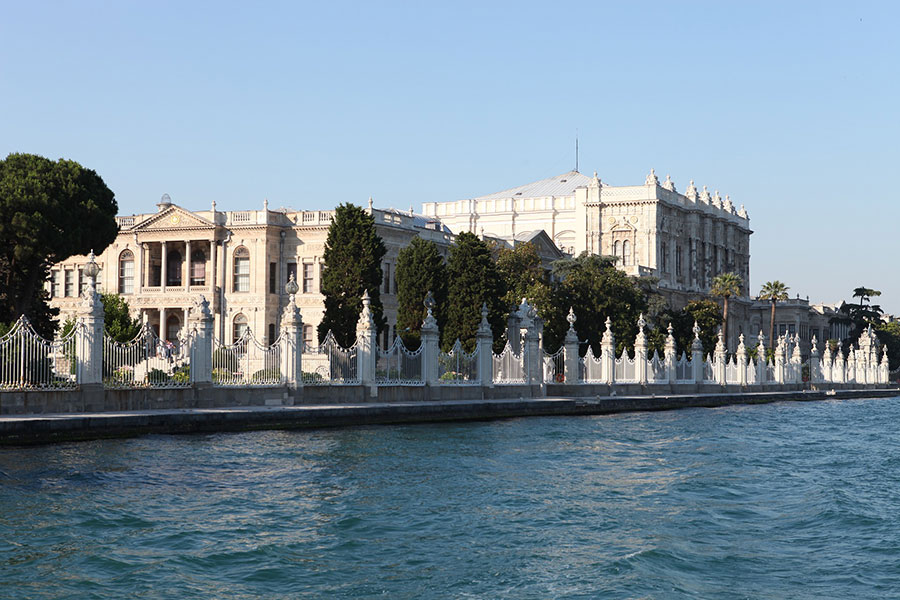
The Dolmabahce Palace, built by the Ottoman Sultan Abdülmecit in 1856 on the shore of the Bosphorus, is one of the most important landmarks of Istanbul with its magnificent view bearing traces of Western architecture.
The largest of the palace in Turkey, Ataturk's also have a different moral value because it is the venue where he spent his final days.
Dolmabahçe Palace, which was opened to the public visit by the National Palaces today, has unique decorations, architectural details, unique carpets, handmade carpets, chandelier craftsmanship, glazed pavilion, greeting section, palace collections, baths and the room where the bed where Mustafa Kemal died. It is one of the first places to visit in Istanbul to take a closer look.
Dolmabahce Palace, whose construction was completed in 1856 with the surrounding walls, was built on an area exceeding 110.000 m2 and it was composed of sixteen separate sections except its main structure. These are structures devoted to a variety of purposes, ranging from palace-like stables to mills, pharmacies to kitchens, mansions, glass houses, foundries, and pastries. Among these structures, During the Sultan II. Abdülhamid Period (1876-1909), the Clock Tower awas added.

Beylerbeyi Palace, located in the Beylerbeyi district of Üsküdar, was built by Sultan Abdülaziz into a grove in the Byzantine period, known as the Istavroz Gardens. The structure, designed by Balyan Family in 1861-1865, consists of six large halls, 24 rooms, 1 bath and 1 bathroom.
Beylerbeyi Palace, which has an impressive structure with its wooden carving and gold embroidery workmanship, is one of the most spectacular buildings in Istanbul.
Beylerbeyi Palace built with the blending of Western and Eastern styles, Harem and Mabeyn departments and Turkish house plan feature.
Beylerbeyi Palace also hosted foreign state guests during the Republican period. Iranian Shah Pahlavi came to Turkey in 1934, President Gazi Mustafa Kemal Ataturk was hosted by the palace. The Balkan Games Festival was held in 1936 at the Beylerbeyi Palace. Mustafa Kemal Atatürk spent the night in Beylerbeyi Palace's historical bedroom.
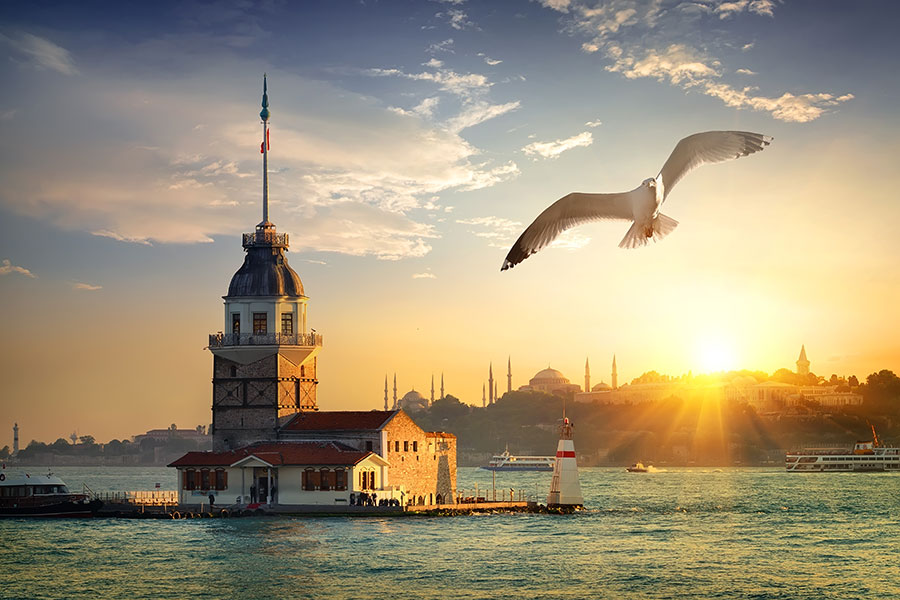
One of the most romantic symbols of Istanbul, the Maiden's Tower was restored in 2000 and started to serve as a restaurant. Üsküdar coastal boats reached the island in 5 minutes to offer marriage to the girl, became one of Istanbul's customs. There is no need to eat in the restaurant to visit the Maiden's Tower, you can only see the Maiden's Tower by paying the toll on the boat.
The tower, built on a small island, is about 18 meters high. The building, which consists of 5 floors, is the last Byzantine structure in Üsküdar District. The tower was named after Damalis, the wife of King Chares of Athens in ancient times.
The Maiden's Tower is undoubtedly one of the most beautiful and fascinating places in Istanbul. A dinner at the sunset in the Maiden's Tower is one of the most beautiful activities in Istanbul. The history of the Maiden's Tower, which is the center of the legends, dates back to 2,500 years. From the Greek to the Byzantine Empire in the ancient times, from there to the present date of the Ottoman Empire.
Today, the Maiden's Tower is used as a cafeteria during the day and as a restaurant in the evening while enjoying the magnificent view of Istanbul.
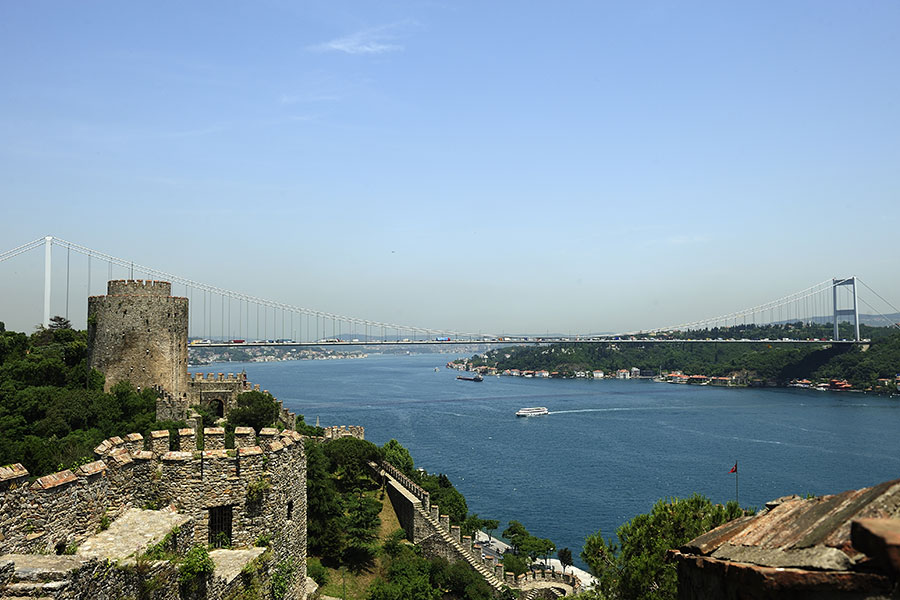
During the conquest of Istanbul, by the order of Fatih Sultan Mehmet was built in 90 days in order to cut the aid from the Black Sea to the Byzantine Empire.
The Rumeli fortress, which is a magnificent structure with its three big towers and city walls, is located opposite the Anadolu fortress at the point where the two shores of the Bosphorus are at the very closest point.
The fortress, where once outdoor activities such as Rumeli fortress concerts took place, is now open to visitors as a museum. In the Rumeli Fortress Museum, the cannons, cannonballs and part of the chain, which is said to have closed the Golden Horn, are still on display.
Rumeli Fortress is an indispensable stop for photo enthusiasts. Is the most beautiful place to take Panoramic pictures of the Istanbul Bosphorus.
When look at Rumeli Fortress with bird's eye the shape of fortress is like word Muhammad in Arabic. The reason why Fatih Sultan Mehmet has made the fortress in this shape because He predicted that Istanbul could not only be protected by military force. It is rumored that he had done this way because a spiritual support was needed.
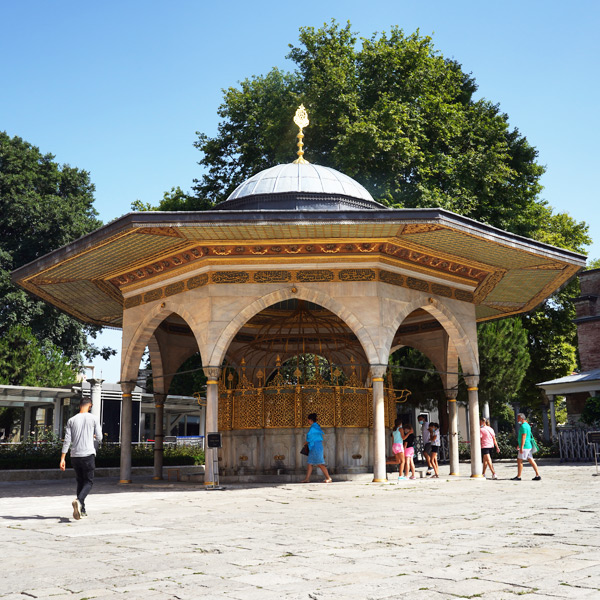
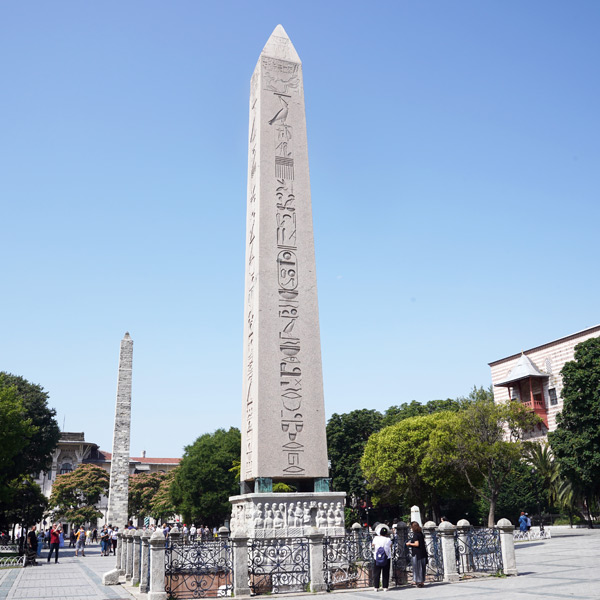
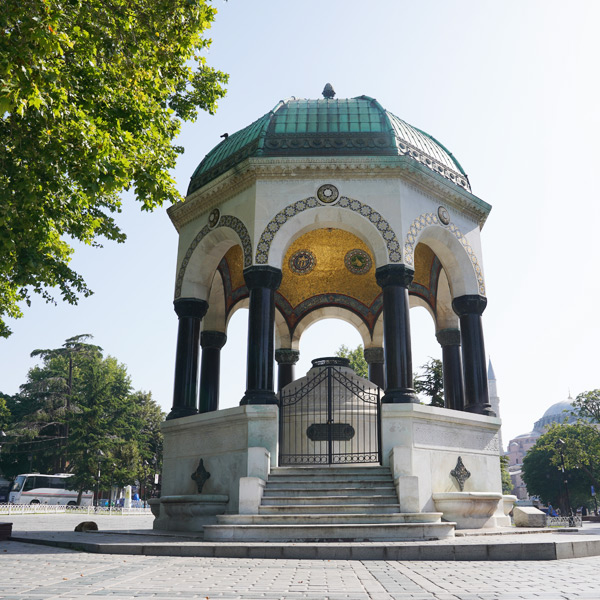
The historical area, which is a real hippodrome where horse races took place during the Byzantine period, is now known as the Horse Square in Sultanahmet Square.
The Obelisk, the Serpentine Column and the German Fountain over which Egyptian hieroglyphics are located in this area. Ibrahim Pasha Palace, which you can visit today as a Museum of Turkish and Islamic Arts, is also at this square.
Obelisk, the most famous among these three storied monuments, was brought from Egypt in 390 and erected in its present place at full thirty-one days. Obelisk, BC. It was built around 1450 for one of the Egyptian Pharaohs. The Snake Column, which adorns the square, was a talisman, represented by the three serpents brought from the Temple of Delphi in Apollon, to protect the city from insects. The last monument on the square is the Thirty-two-meter-high Knitted Obelisk, which looks extremely impressive and overlook the hill.
Today, it is used as the Museum of Turkish and Islamic Art and took its name from Damat Ibrahim Pasha, the second vizier of Suleyman the Magnificent. This historical palace, where you can see many beautiful examples of Turkish and Islamic Art, is the first Turkish museum in this area.
German Emperor II Wilhelm built the German fountain as gift to Istanbul as a sign of Turkish-German friendship. The fountain, which was built in Germany, was combined in Istanbul and opened in 1901.
One of the most important works of the 17th century, the Blue Mosque is a masterpiece built by Mimar Sinan in his understanding of architecture by Sedefkar Mehmet Aga, the principal architect of the period, on the orders of Sultan I.Ahmet. The construction of the mosque, which lasted 7.5 years, started in 1609 and was completed in 1617.
Because the mosque is decorated with blue, green and white colored Iznik tiles, and because its half domes and large dome are decorated with blue weighted pencils, the Europeans are called the Blue Mosque.
8th Wonders of the World Hagia Sophia; Hagia Sophia in Istanbul, which is based to the Byzantine Constantin days. After the conquest of Istanbul, the place where the first Friday prayer was performed was Ayasofya. It was converted into a mosque but is now visited as a museum.
The Istanbul archaeological museum is one of the largest museums in the world with over one million works of various cultures. Archaeological Museum, the oldest museum building was built in Turkey was established in late 19th century painter and museum director Osman Hamdi Bey as the Empire Museum and was opened to visitors on June 13, 1891.
The Ottoman Empire is one of the empires of the world that has reached the largest borders and has maintained its dominance for centuries. Topkapi Palace, where sultans and their families live, is waiting to be seen in the Historic Peninsula with all its glory.
Aya İrini, located in Istanbul Topkapi Palace's courtyard, next to Hagia Sophia and contemporary with it, is the largest Byzantine church in Istanbul, which has not been converted into a mosque.
It has one of the world's richest carpet collections. Seljuk and the Ottoman period with an old Islamic tradition of mosques, tombs and mosques donated to the historical and artistic value of the carpets exhibited in the museum, with their own specific patterns in the various weaving centers of Anatolia from the 14th century until the 20th century with the most precious carpets and prayer rugs Iranian and Caucasian carpets are also on display.
Sogukcesme Street, an open-air museum. Between the Hagia Sophia Mosque and the Topkapı Palace, there are twelve bay windows, wooden houses, and a Roman cistern, on the street of Soğukçeşme; There is also the mansion of the bathhouse and the minaret of Naziki.
Little Hagia Sophia church was built by Byzantine Emperor Justinian and his wife Theodora as a church in the 530s and converted to a mosque after the conquest of Istanbul.